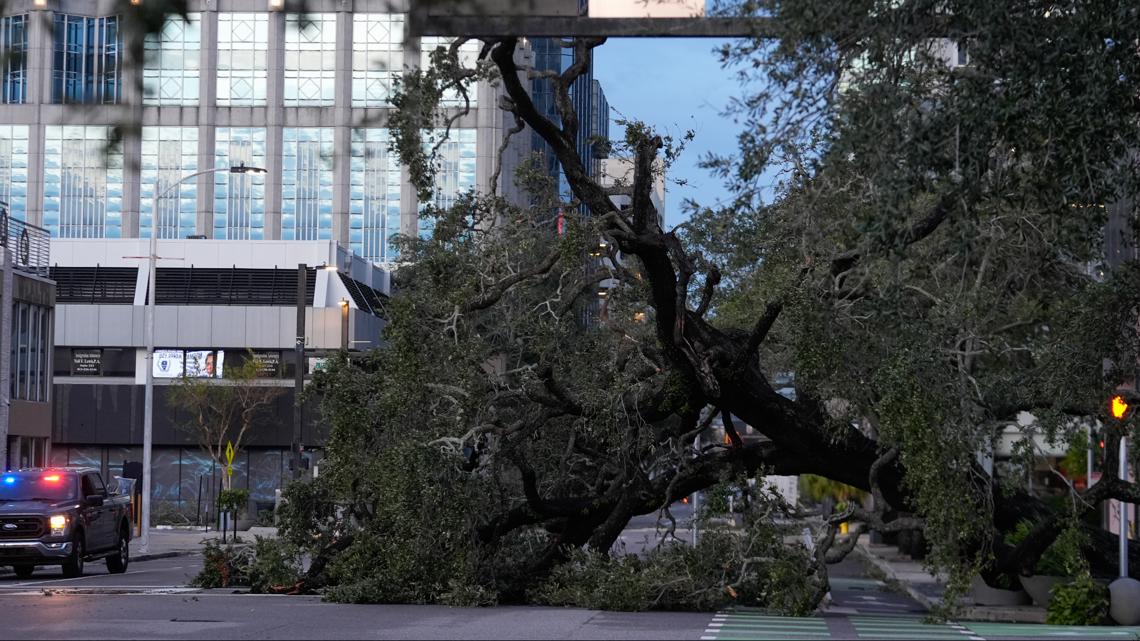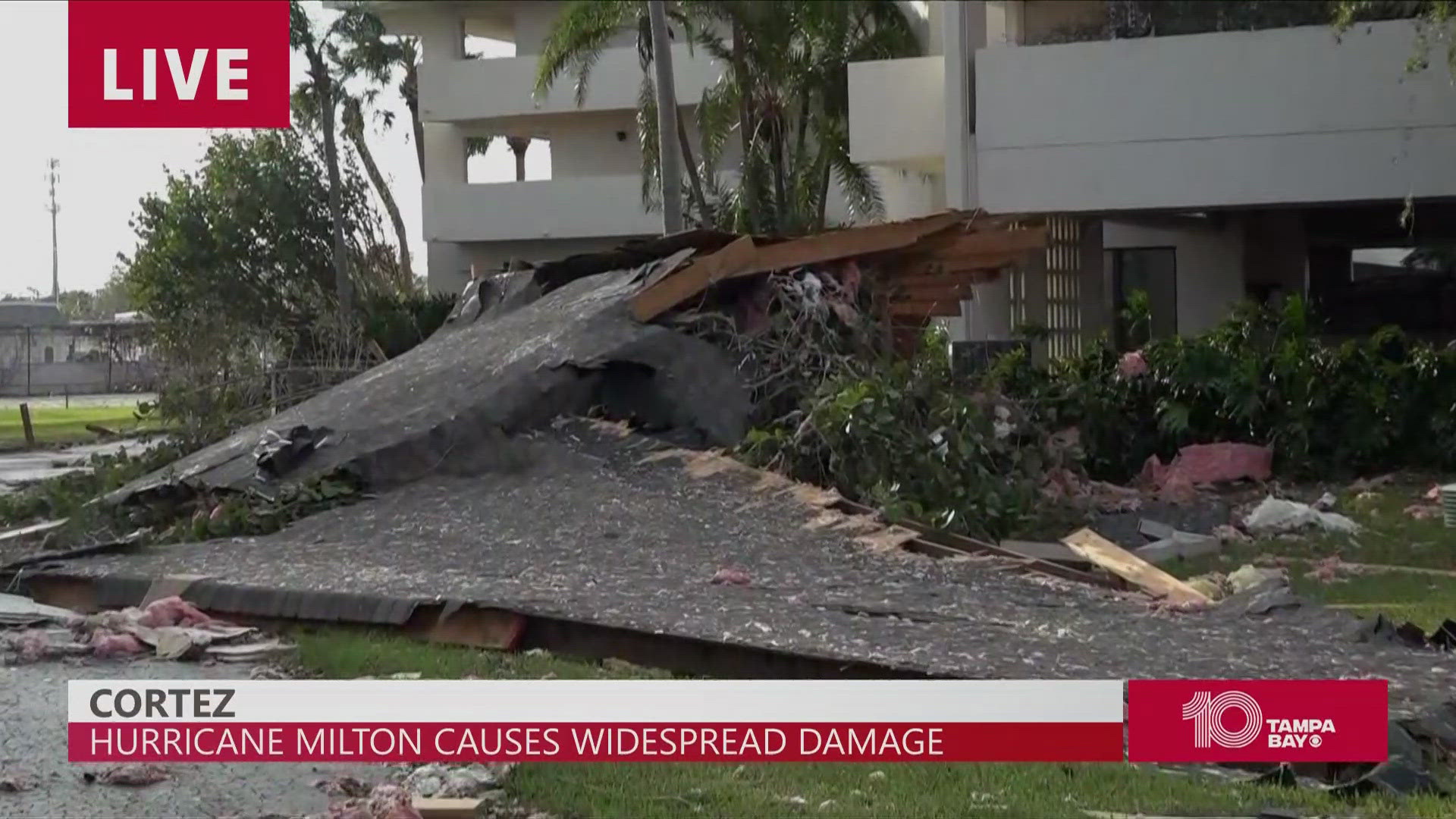TAMPA, Fla. — Rescue teams plucked Florida residents from the flotsam of Hurricane Milton on Thursday after the storm smashed through coastal communities where it tore homes into pieces, filled streets with mud and spawned a barrage of deadly tornadoes. At least six people were dead.
Arriving just two weeks after the misery wrought by Hurricane Helene, the system also knocked out power to more than 3 million customers, flooded barrier islands, tore the roof off a baseball stadium and toppled a construction crane.
Among the most dramatic rescues, Hillsborough County officers found a a 14-year-old boy floating on a piece of fence and pulled him onto a boat. A Coast Guard helicopter crew rescued a man who was left clinging to an ice chest in the Gulf of Mexico after his fishing boat broke down off Medeira Beach hours before the hurricane came ashore.
Despite the destruction, many people expressed relief that Milton wasn't worse. The hurricane spared Tampa a direct hit, and the lethal storm surge that scientists feared never materialized.
The storm tracked to the south in the final hours and made landfall late Wednesday as a Category 3 hurricane in Siesta Key, about 70 miles (112 kilometers) south of Tampa. Damage was widespread, and water levels may continue to rise for days, but Gov. Ron DeSantis said it was not “the worst-case scenario.”
“You face two hurricanes in a couple of weeks — not easy to go through — but I’ve seen a lot of resilience throughout this state,” the governor said at a briefing in Sarasota. He said he was "very confident that this area is going to bounce back very, very quickly.”
Five people were killed in tornadoes in the Spanish Lakes Country Club near Fort Pierce, on Florida’s Atlantic Coast, where homes were destroyed, authorities said. Police also found a woman dead under a fallen tree branch Thursday.

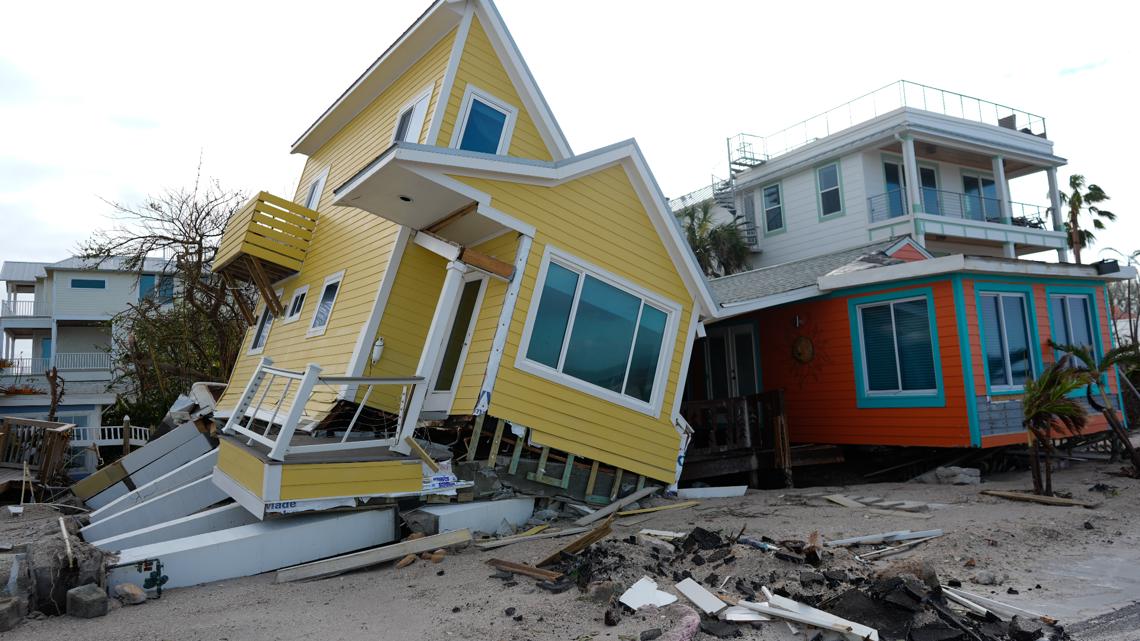
At least 340 individuals and 49 pets have been rescued in ongoing search-and-rescue operations, DeSantis said Thursday afternoon.
South of Tampa, Natasha Shannon and her husband, Terry, felt lucky to be alive after the hurricane peeled the tin roof off their cinder block home in Palmetto. They spent the night in a shelter with their three children and two grandchildren after she pushed them to leave.
“I said, ‘Baby, we got to go. Because we’re not going to survive this,’” she said.
They returned to find the roof torn into sheets across the street, shredded insulation hanging from exposed ceiling beams and their belongings soaked.
“It ain’t much but it was ours,” she said. “What little bit we did have is gone.”
The worst storm surge appeared to be in Sarasota County, where it was 8 to 10 feet (2.5 to 3 meters) — lower than in the worst place during Helene. The storm also dumped up to 18 inches (45 centimeters) of rain in some areas.
Officials in the hard-hit Florida counties of Hillsborough, Pinellas, Sarasota and Lee urged people to stay home, warning of downed power lines, trees in roads, blocked bridges and flooding.
Among the dozens of tornadoes was a twister that hit the tiny barrier island of Matlacha, just off Fort Myers. The fishing-and-tourism village also endured a surge, with many of the colorful buildings sustaining serious damage. Tom Reynolds, 90, spent the morning sweeping out 4 feet of mud and water and collecting chunks of aluminum siding torn off by a twister that also picked up a car and threw it across the road.
Elsewhere on the island, a house was blown into a street, temporarily blocking it. Some structures caught fire. Reynolds said he planned to repair the home he built three decades ago.
“What else am I going to do?” he said.

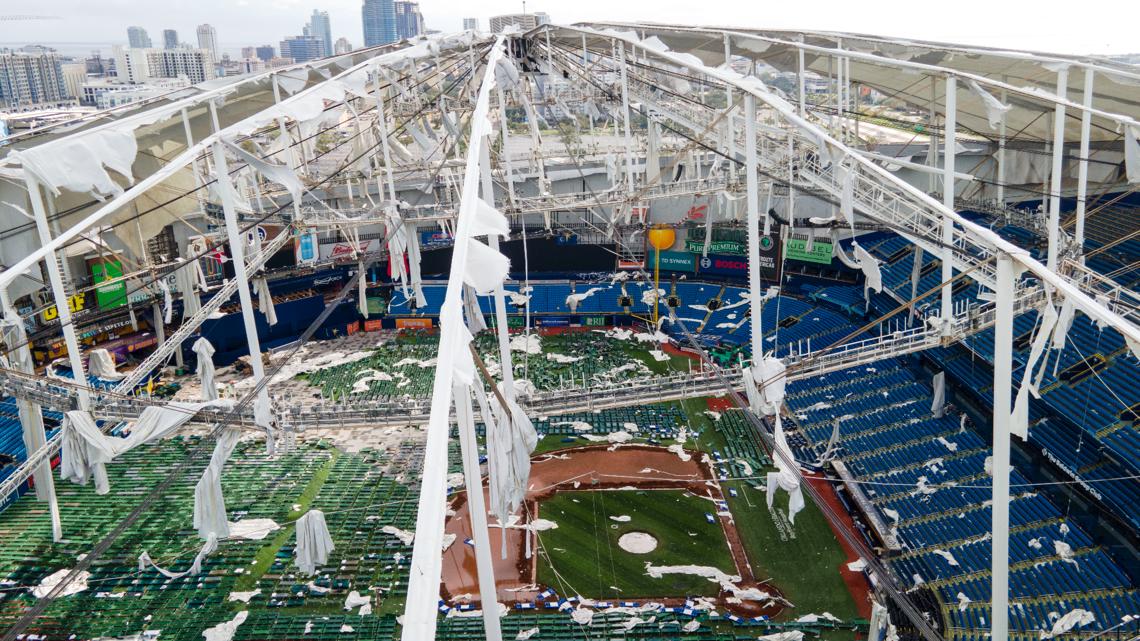

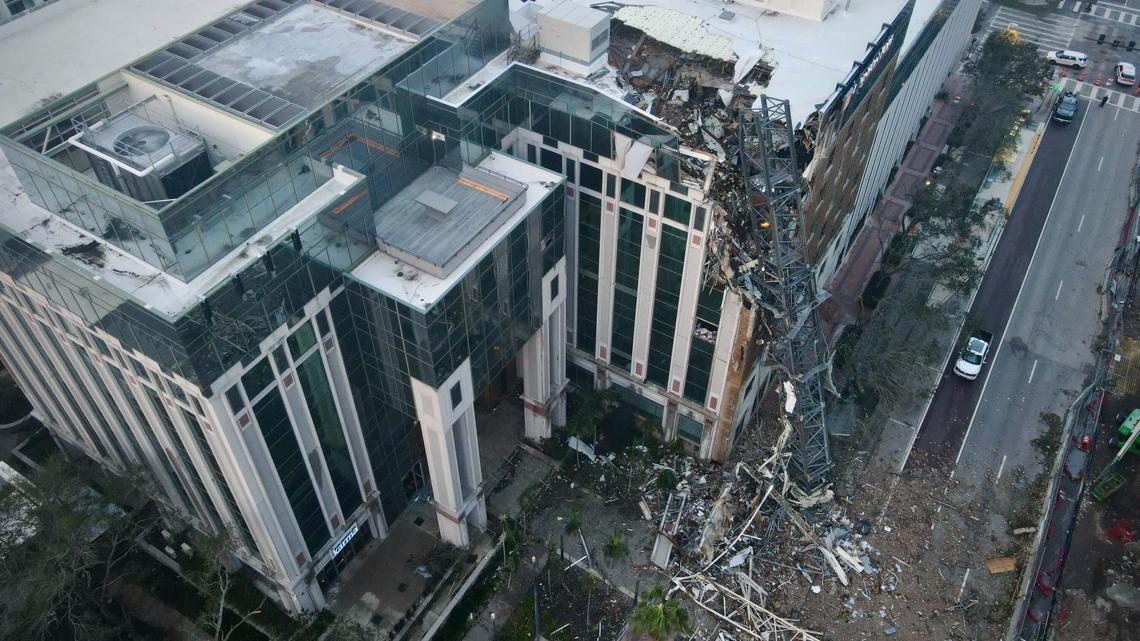
In contrast, city workers on Anna Maria Island were grateful not to be wading through floodwaters as they picked up debris Thursday morning, two weeks after Helene battered buildings and blew in piles of sand up to 6 feet (1.8 m) high. Those piles may have helped shield homes from further damage, said Jeremi Roberts of the State Emergency Response Team.
“I’m shocked it’s not more,” city worker Kati Sands said as she cleared the streets of siding and broken lights. “We lost so much with Helene, there wasn’t much left.”
The storm slammed into a region still reeling from Helene, which flooded streets and homes in western Florida and left at least 230 people dead across the South. In many places along the coast, municipalities raced to collect and dispose of debris before Milton’s winds and storm surge could toss it around and compound any damage.
Power was knocked out across much of the state, with more than 3.4 million homes and businesses without electricity, according to poweroutage.us, which tracks utility reports.
The fabric that serves as the roof of Tropicana Field — home of the Tampa Bay Rays baseball team in St. Petersburg — was ripped to shreds by fierce winds. Debris littered the field.
About 80,000 people spent the night in shelters and thousands of others fled after authorities issued mandatory evacuation orders across 15 Florida counties with a total population of about 7.2 million people.
In Punta Gorda, a 10-foot surge from the Peace River swept into the historic district, damaging homes and depositing six boats along one riverside street. It was the third surge to hit the neighborhood in three months.
Josh Baldwin said he was leaning toward scrapping his 38-foot boat rather than pay $100,000 to fix it. He couldn’t get insurance because it was moored in Punta Gorda.
“They don’t like to pay out, and this place always gets ruined in hurricanes,” he said.
A half-block away, information technology workers Kent and Cathy Taylor and their son were using an SUV attached to a chain to pull waterlogged drywall out of the bottom floor of their three-story home, which they bought in July. The lower level is gutted, but the upper floors are still structurally sound.
“It will be beautiful again — it’s just a nick,” Cathy Taylor said.
Speaking at a White House briefing, Homeland Security Secretary Alejandro Mayorkas said there were reports of as many as 10 fatalities from tornadoes, but he cautioned that the number was tentative.
By Thursday afternoon, Milton was headed into the Atlantic Ocean as a post-tropical cyclone with winds of 75 mph (120 kph) — just barely hurricane force.
Crossing the bridge from the mainland to Anna Maria Island early Thursday, Police Chief John Cosby breathed a sigh of relief. Nearly all residents had evacuated. There were no injuries or deaths, and the projected storm surge never happened. After fearing that his police department would be underwater, it remained dry.
“It's nice to have a place to come back to,” he said.

